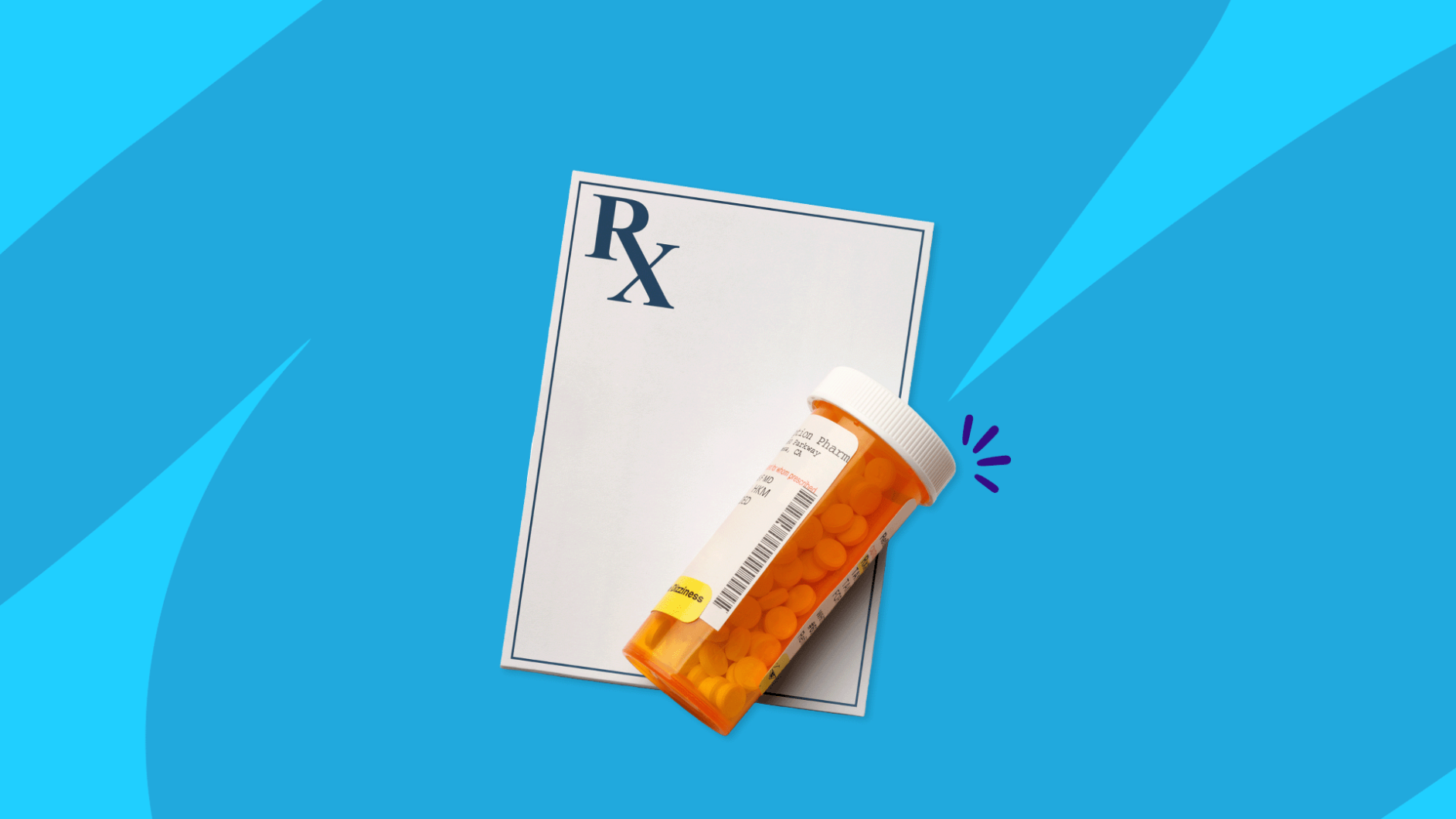Common fluvoxamine side effects | Serious side effects | Insomnia | Sexual dysfunction | Severe allergic and skin reactions | Side effects timeline | Contraindications | Warnings | Interactions | How to avoid side effects | How to treat side effects
Fluvoxamine is a generic prescription drug FDA approved to treat obsessive-compulsive disorder (OCD), though it is sometimes used off-label for social anxiety disorder. Fluvoxamine is one of the least-known members of a family of drugs called SSRIs, or selective serotonin reuptake inhibitors. Most people think of SSRIs as antidepressants, but they are also effective in treating anxiety.
OCD is very similar to anxiety, and fluvoxamine helps people control obsessive thoughts and compulsive behaviors by increasing a chemical in the brain called serotonin. This helps increase activity in the part of the brain that controls mood. Side effects of fluvoxamine are familiar to anyone who has taken any of the better-known SSRIs.
Common side effects of fluvoxamine
In people who take immediate-release fluvoxamine tablets, the most common complaints are nausea and headache. However, those on extended-release fluvoxamine experienced insomnia at about the same rate as headache and nausea (about 1 in 3 participants). Common side effects of fluvoxamine may include:
- Nausea
- Headache
- Insomnia
- Sleepiness
- Fatigue
- Dry mouth
- Nervousness
- Dizziness
- Diarrhea
- Constipation
- Upset stomach
- Upper respiratory infection
- Decreased libido
- Sweating
- Ejaculation problems
- Loss of appetite
- Sore throat
- Vomiting
- Anxiety
- Muscle pain
- Tremor
- Flatulence
- Flu syndrome
- Tooth problems
- Changes in taste
- Yawning
- Inability to orgasm
- Twitching
- Abnormal thinking
- Abdominal pain
- Skin discoloration
Serious side effects of fluvoxamine
The most serious side effects of fluvoxamine are:
- Suicidal thoughts and behaviors
- Worsening of depression
- Mania or hypomania
- Serotonin syndrome
- Abnormal bleeding
- Seizures
- Low sodium
- Painful or prolonged erections
- Angle-closure glaucoma
- Involuntary muscle movements (extrapyramidal symptoms)
- Withdrawal symptoms (if the drug is abruptly stopped)
- Severe skin or allergic reactions
Fluvoxamine and insomnia
Trouble sleeping may occur with SSRIs like fluvoxamine, but insomnia is more likely in people taking extended-release fluvoxamine. In clinical trials, about 1 out of 5 people taking immediate-release fluvoxamine reported insomnia. That increased to about 1 out of 3 people taking extended-release fluvoxamine. Insomnia is not a trivial side effect in anyone being treated for a mental health condition. If sleeplessness is a problem, talk to the prescriber. A change in dose or a different medication may be required.
Fluvoxamine and sexual dysfunction
Like other SSRIs, fluvoxamine can decrease the quality of a patient’s sex life. For immediate-release fluvoxamine, 8% of clinical trial participants experienced ejaculation problems, and another 2% reported decreased libido or inability to orgasm. These sexual problems are more likely when taking extended-release fluvoxamine: 11% of participants experienced ejaculation problems, and both men and women (4% and 5%) complained of an inability to orgasm, as well as decreased libido, impotence, and other sexual problems. These side effects may persist for as long as fluvoxamine is taken. However, in most cases, sexual function gradually returns to normal when the drug is stopped. If fluvoxamine is interfering too much with sexual satisfaction, consult the prescriber for medical advice.
Fluvoxamine and severe allergic and skin reactions
Although severe allergic or skin reactions are rare, it is important to be aware of the symptoms, so that patients can seek emergency care if symptoms occur. Symptoms of an allergic reaction may include hives, difficulty breathing, or swelling of the face, lips, tongue, or throat. Symptoms of a severe skin reaction may include fever, burning eyes, sore throat, red or purple rash, and/or blistering, peeling skin. If any of these symptoms occur, get emergency medical attention.
How soon do fluvoxamine side effects start?
Many of the most common side effects of fluvoxamine—headache, nausea, insomnia, drowsiness, and others—happen early in treatment. Some of the more concerning side effects such as sexual dysfunction, extrapyramidal symptoms, and severe skin reactions are usually delayed side effects, occurring after the drug has been taken for weeks or months.
How long do fluvoxamine side effects last?
In many cases, fluvoxamine side effects will improve over a few weeks or months as the body adapts to the drug. Some side effects, such as sexual dysfunction, may not. But nearly all fluvoxamine side effects are reversible if the drug is discontinued. It may take a while, though. Expect to take a gradually decreasing dose once it’s time to stop—your doctor will provide you with a tapering schedule. Within about a week after taking the last dose, most side effects should clear up.
What are the long-term side effects of fluvoxamine?
Fluvoxamine is intended to be taken as a maintenance treatment for several months or longer even after symptoms of OCD have subsided. There are no adverse effects specifically due to the long-term use of fluvoxamine in adults.
However, for children, weight loss or insufficient weight gain may be a long-term side effect. Weight and growth should be monitored throughout treatment.
Fluvoxamine contraindications
Fluvoxamine is never prescribed to people who have had an allergic reaction to fluvoxamine or other SSRIs. People who have taken a drug in the MAOI drug class within 14 days should not take fluvoxamine.
Pregnancy
In some cases, fluvoxamine may be prescribed to pregnant women (early in the pregnancy) under close supervision of the healthcare provider. However, fluvoxamine should not be taken in the third trimester, because there is a risk the newborn baby will experience complications that may require extended hospitalization, respiratory support, and tube feeding.
Breastfeeding
Fluvoxamine may be taken by women who are breastfeeding, if approved by the healthcare provider. The drug is present in breast milk and may affect the nursing infant. Women who take fluvoxamine while breastfeeding will be asked to monitor the infant for side effects such as diarrhea, vomiting, agitation, and sleep problems.
Children
Fluvoxamine is FDA approved to treat pediatric patients as young as 8 years old with OCD. Safety tests, however, have only been conducted using short-term trials, so long-term safety is uncertain. Decreased appetite and weight loss are a concern, so the child’s weight and growth should be regularly checked.
Older adults
In clinical trials, fluvoxamine was as effective and safe in older adults as in younger adults. However, fluvoxamine is used cautiously in people ages 65 years and older. Most importantly, older adults are more vulnerable to low sodium. They also eliminate the drug from the body more slowly than younger adults, so healthcare professionals will start with low doses.
Fluvoxamine warnings
Black box warning
As with all SSRIs, fluvoxamine comes with a black box warning on its drug information sheet about the risk of suicidality in children, adolescents, and young adults taking the drug. Patients of any age who take fluvoxamine should be closely monitored for changes in mood and/or behavior, as well as suicidal thoughts or behaviors. Any changes should be reported to the healthcare provider immediately.
Cautions
Some pre-existing conditions can be worsened by the side effects of fluvoxamine. These include:
- Bipolar disorder or a history of mania or hypomania
- Seizure disorders
- Dehydration
- Bleeding problems/risk of bleeding
- Angle-closure glaucoma
- Liver problems
Abuse and dependence
Fluvoxamine is not a controlled substance. It does not cause physical dependence. It is not associated with drug abuse or misuse.
Withdrawal
Although fluvoxamine does not cause physical dependence, the abrupt discontinuation of the drug can bring on withdrawal symptoms including:
- Bad mood
- Irritability
- Agitation
- Dizziness
- Numbness and tingling
- Electric shock sensations
- Anxiety
- Mood swings
- Confusion
- Headache
- Low energy
- Sleeplessness
- Hypomania
When it is time to stop taking fluvoxamine, the healthcare provider will prescribe a gradually decreasing dose (referred to as a taper) to prevent withdrawal symptoms.
Overdose
Call a poison control center or get emergency medical attention if too much fluvoxamine is taken. Symptoms of an overdose include vomiting, diarrhea, trouble breathing, changes in blood pressure, heart rhythm problems, seizures, altered mental status, serotonin syndrome, or coma.
Fluvoxamine interactions
Before taking fluvoxamine, tell your doctor about all the medications you take. This includes prescription and OTC drugs, vitamins, and supplements.
Like all SSRIs, fluvoxamine has several drug interactions. Some are so dangerous that fluvoxamine can never be taken with those drugs no matter what:
- Monoamine oxidase inhibitors (MAOIs)
- Antipsychotic medications pimozide and thioridazine
- Rozerem (ramelteon)
- Muscle relaxant Zanaflex (tizanidine)
- IBS-diarrhea medication Lotronex (alosetron)
Serotonin syndrome can happen when there is a buildup of excess serotonin. This may be more likely to occur during a dosage increase, for example, or when two or more drugs that raise serotonin are taken. Serotonin syndrome can be severe, so healthcare professionals are cautious about prescribing fluvoxamine with certain drugs, including these examples:
- Other SSRIs such as Prozac (fluoxetine), Paxil (paroxetine), or Zoloft (sertraline)
- SNRIs
- Tricyclic antidepressants such as clomipramine and amitriptyline
- Some antipsychotic medications
- Bipolar disorder medication lithium
- Certain ADHD medications such as Adderall or Ritalin
- Opioids
- Anticonvulsants such as carbamazepine
- Migraine drugs called ergots or triptans
- Anti-nausea medications such as ondansetron
- Parkinson’s disease medication rasagiline
- Cough medication dextromethorphan (found in some Rx and OTC cough and cold medicines)
- Some over-the-counter supplements such as tryptophan and St. John’s wort
Like other SSRIs, fluvoxamine may increase the risk of bleeding. This risk is increased when fluvoxamine is combined with a blood thinner such as warfarin, Eliquis, or Xarelto—or a nonsteroidal anti-inflammatory drug (NSAID) such as aspirin, ibuprofen, or naproxen.
Fluvoxamine slows down the breakdown of certain drugs, making their side effects more likely. The most concerning are benzodiazepines like Valium (diazepam) and Xanax (alprazolam), the COPD medication theophylline, the antipsychotic clozapine, the beta-blockers propranolol and metoprolol, and the heart rhythm drug mexiletine.
Finally, taking fluvoxamine with diuretics such as hydrochlorothiazide or furosemide may increase the risk of low sodium.
This is not a full list of drug interactions and others may occur. Consult your healthcare provider for a full list of drug interactions.
How to avoid fluvoxamine side effects
There’s a good chance anyone taking fluvoxamine will encounter at least one adverse effect, maybe more. However, side effects are less likely if a few measures are taken ahead of time.
1. Tell the prescriber about any pre-existing medical conditions
Before prescribing fluvoxamine, the healthcare professional will ask for a complete medical history or at least ask about a few key medical conditions. To avoid major problems, the prescriber will need to know about:
- Any history of suicidal thoughts or behaviors
- Depression
- Bipolar disorder or a history of mania
- Heart problems
- Stroke
- High blood pressure
- History of seizures
- Bleeding problems
- Low sodium
- Uncorrected narrow angles or a history of narrow-angle glaucoma
- Sexual problems
- Liver problems
- Kidney problems
- Pregnancy or pregnancy plans
- Breastfeeding or breastfeeding plans
2. Give the prescriber a complete list of drugs being taken
Another possible source of fluvoxamine side effects is drug interactions. Give the prescriber a complete list of the prescription drugs, over-the-counter remedies, and vitamins or dietary supplements being taken, especially drugs mentioned in the interactions section above.
3. Follow the prescriber’s instructions
Take fluvoxamine as instructed. At first, the dose may be low. The prescriber will give you instructions to slowly increase the dose until you get to the most effective dose, so follow your prescriber’s directions closely. Do not take more medicine than prescribed. If you have any questions or do not understand how to take this medication, reach out to your prescriber.
4. Take each dose of fluvoxamine with food
If nausea or stomach upset are problems, take fluvoxamine with a meal or snack.
How to treat side effects of fluvoxamine
Unfortunately, not all side effects of fluvoxamine can be prevented. The most common—headaches, nausea, and insomnia—can be managed. More serious side effects will almost certainly require medical help.
Headaches
Avoid NSAIDs such as aspirin or ibuprofen due to the increased risk of bleeding. Ask the prescriber about taking acetaminophen, which is the ingredient in Tylenol. Acetaminophen should be safe to take with fluvoxamine. Otherwise, resting in a dark, cool, quiet room and drinking plenty of fluids can help. If headaches become severe or chronic, talk to the prescribing healthcare provider.
Nausea and vomiting
Try eating smaller and blander meals. If vomiting, make sure to drink plenty of fluids, but in small amounts. If vomiting becomes too severe or doesn’t go away, call the prescribing healthcare provider.
Insomnia
Trouble sleeping is a common side effect of fluvoxamine. Practice good sleep hygiene such as relaxing before bedtime, going to bed at the same time each night, and getting rid of distractions. If this doesn’t work, get medical advice from the prescriber.
Drowsiness and dizziness
Feeling sleepy, tired, or dizzy is handled by waiting it out. It’s best to sit or even lie down and let it pass. When feeling better, stand up slowly. These feelings may go away as your body adjusts to the medication. However, if drowsiness or dizziness is interfering too much with daily life, talk to the prescriber.
Low sodium
Once low sodium levels become symptomatic, it’s time for medical attention. The signs of low sodium are:
- Headache
- Weakness
- Coordination problems
- Confusion
- Seizures
Vision changes
In some people, fluvoxamine can cause serious eye problems that can progress very rapidly to blindness if untreated. Immediate medical attention is required if any symptoms like vision changes, swelling or redness around the eye, or eye pain are experienced.
Suicide
When anyone is thinking about suicide or acting like they’ll commit suicide, they need immediate intervention by a healthcare or mental health professional. Call the prescriber or a suicide helpline if any signs of suicidality are noticed including:
- Suicide attempts
- Talking or thinking about suicide or death
- Worsening of depression
- Anxiety
- Panic attacks
- Unexplained or unusual mood or behavior changes
- Acting on dangerous impulses
- Violence, anger, or hostility
- Irritability, agitation, or restlessness
- Manic symptoms like frenzied activity or fast talking
- Insomnia
Serotonin syndrome
Serotonin syndrome is relatively rare but is a risk when taking one or more drug(s) that increase(s) serotonin levels in the brain. It’s a potentially serious and even life-threatening condition, so get immediate medical attention if any of its symptoms are noticed:
- Racing or irregular heartbeats
- High blood pressure
- Coordination problems
- Muscle twitching
- Muscle rigidity
- Heavy sweating
- High fever
- Chills
- Diarrhea
- Headache
- Dizziness
- Agitation/restlessness
- Trouble sleeping
- Confusion
- Dilated pupils
- Tremor
- Hallucinations
- Seizures
- Coma
Sources
- Fluvoxamine, Epocrates
- Fluvoxamine maleate tablet prescribing information, U.S. National Library of Medicine











